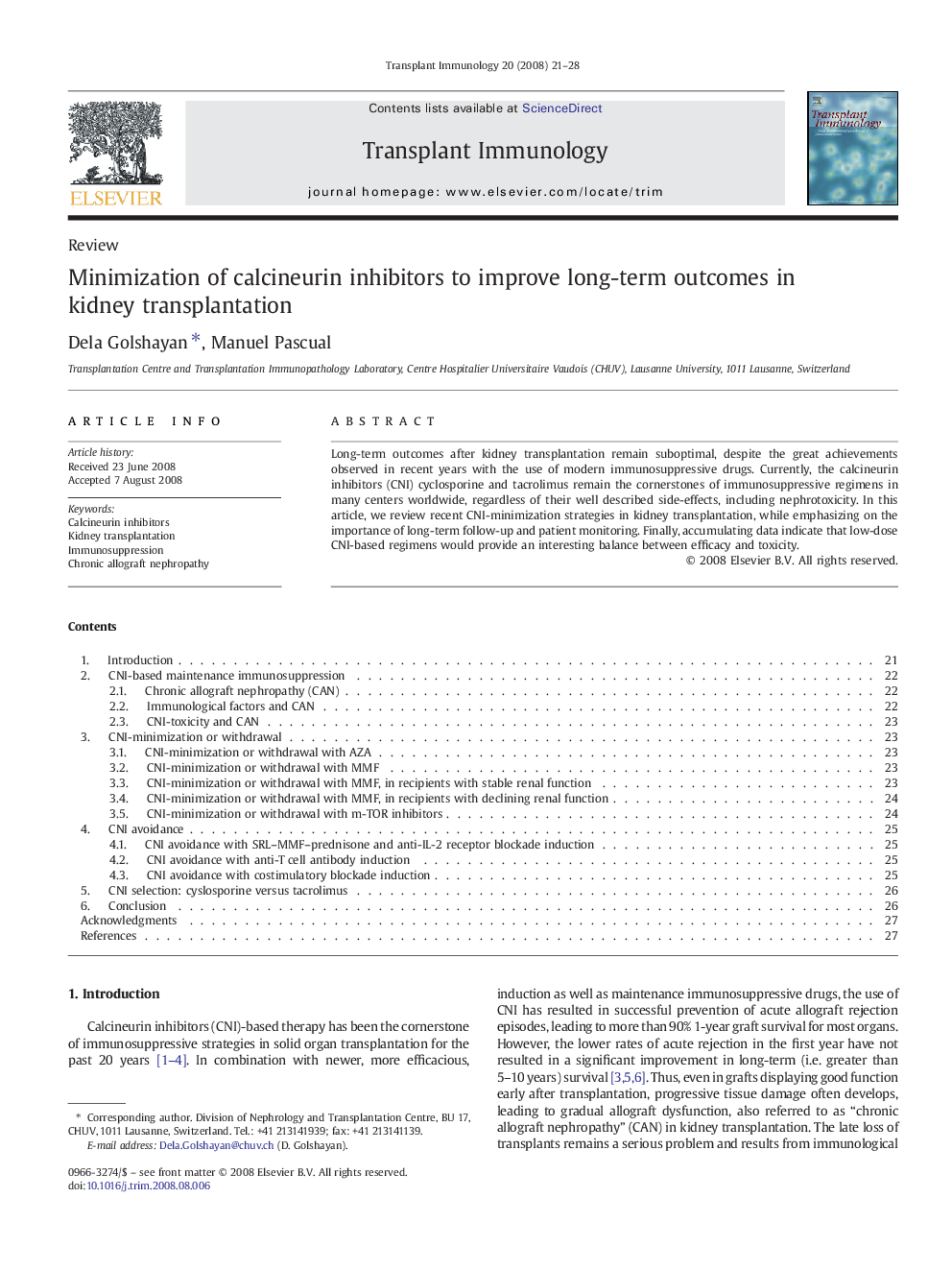| Article ID | Journal | Published Year | Pages | File Type |
|---|---|---|---|---|
| 3392423 | Transplant Immunology | 2008 | 8 Pages |
Abstract
Long-term outcomes after kidney transplantation remain suboptimal, despite the great achievements observed in recent years with the use of modern immunosuppressive drugs. Currently, the calcineurin inhibitors (CNI) cyclosporine and tacrolimus remain the cornerstones of immunosuppressive regimens in many centers worldwide, regardless of their well described side-effects, including nephrotoxicity. In this article, we review recent CNI-minimization strategies in kidney transplantation, while emphasizing on the importance of long-term follow-up and patient monitoring. Finally, accumulating data indicate that low-dose CNI-based regimens would provide an interesting balance between efficacy and toxicity.
Related Topics
Life Sciences
Immunology and Microbiology
Immunology
Authors
Dela Golshayan, Manuel Pascual,
